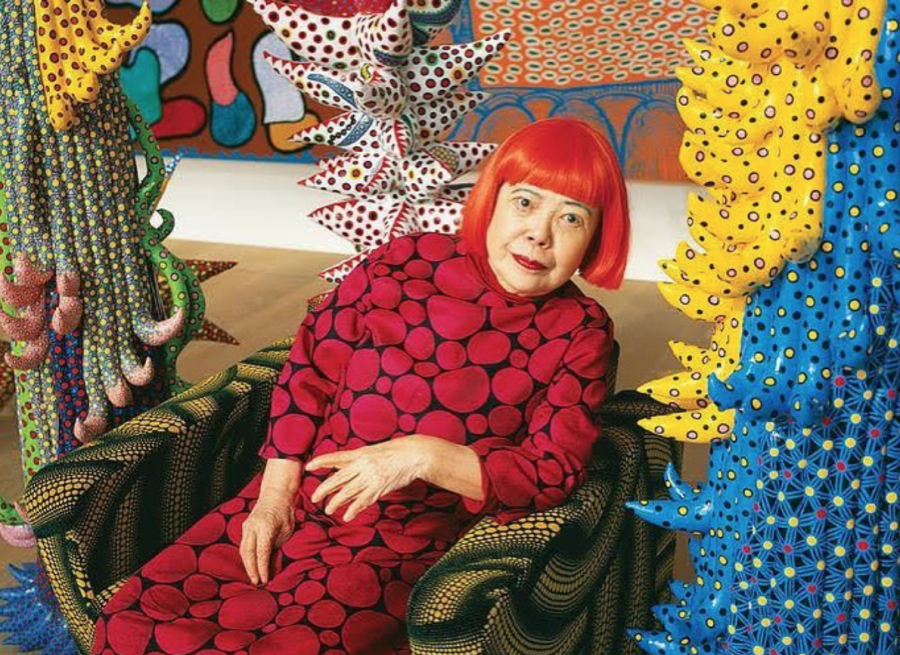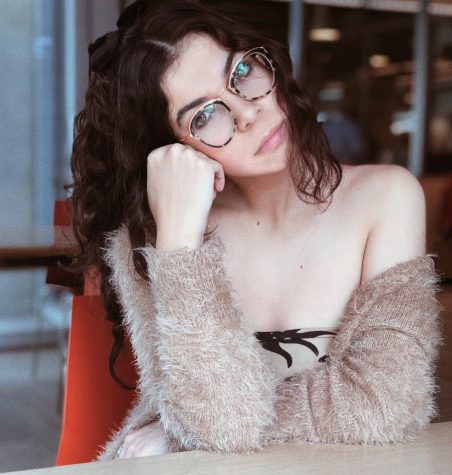There is some art that refuses to be defined – contemporary art, for instance, is that some. Contemporary art continually displays the signs of its freedom by distinction. It lacks sentimentalism, it makes a virtue of obscurity, it’s cryptic explorations of the human subconscious, or delightful dreams and fantasies. There is no such this as generalization with contemporary art. It’s not a distinguished movement with a proper theme, it’s every movement with every theme. Contemporary art is anything and everything. It lacks an ideology, and an organizing principle or uniform. It’s a combination of materials, abstract ideas, and subjects. It’s any art produced in the second half of the 20th century to the 21st. The question is, who are the contemporary artists of today and what are they creating?
Let’s take Yayoi Kusama, for instance. Kusama or the polka-dot princess is a Japanese contemporary artist who primarily works on sculpture and installation. Having been born in 1929, Kusama was a part of the avant-garde movement in New York City and lived through the rise of the pop-art scene, and now lives in the contemporary art world. As she welcomed the hippie counterculture of the late 1960s, she organized a series of anti-capitalist protests in which her naked participants were painted with brightly colored polka dots. This was so boisterous, that she made it on the cover of the New York Daily News. Currently, she holds exhibitions worldwide, with two in Los Angeles, one infinity mirrored room inside of the Broad Museum and a red polka-dotted room with three floor-to-ceiling tulip sculptures at the Marciano Art Foundation.
Another controversial artist and sculptor in the art world today is Jeff Koons. Born in York, Pennsylvania, Koons uses everyday objects as inspirations and turns them into 11-foot mirror-polished stainless steel balloon animals. Apart from his giant-balloon like structures, he created a giant 40-foot-tall flower-covered topiary puppy, located outside the Guggenheim museum in Bilbao, Spain. Koons conceitedness has made him more compelling. He often compares his “DNA” to Picasso’s and in the 70’s he wore a mustache much like Salvador Dali’s. Amelia Abraham of Vice News interacted with Koons in 2015, she called him “the Kanye West of contemporary art.” His most compelling art piece, the “Orange Balloon Dog” was sold to an anonymous telephone bidder in November of 2013 for 58.4 million dollars, which is the most expensive work sold by a living artist. He currently holds exhibitions worldwide, including a permanent one in The Broad, Los Angeles.
Damien Hirst is someone else who has managed to dominate the current contemporary art scene. English-born Hirst is known for his controversial take on beauty and “found-art objects” He explores the conflicting relationships between life and death, religion and science, and art. His art piece, “Lullaby Spring” recently sold for 17.1 million dollars at the international auction house, Sotheby’s in London. The Broad in Los Angeles currently holds various Damien Hirst pieces in their permanent collection.
American artist, Richard Prince, is someone who took art differently. Inspired by Willem de Kooning and Andy Warhol, Prince uses photographs from consumer culture and appropriates them into his own. Basically, he takes photographs of photographs. He probes ideas around authenticity and ownership, sparking debates worldwide. His most famous series, “Cowboys” was taken from Marlboro cigarette ads from the time. In 2009, Patrick Cariou filed a copyright compliant suit against Richard Prince for copying his photographs and engaging in a variety of transformations. Prince exhibited this in his collection at Gagosian Gallery in New York as appropriation art. The case, which made it to the Second Circuit, found Prince’s transformative artwork, as fair use. Meaning, Prince won. Richard Prince holds a variety of pieces in the Broad’s permanent collection, including one from his “Cowboys” series.
Contemporary art sparks curiosity. In retrospect, contemporary art is a reflection of this moment in time, a reflection of what the people desire. It challenges us to think critically and encourages intercultural understanding. Artists such as Kusama, Koons, Hirst, and Prince, are the artists representing this generation in art. They will be the artists remembered in art history textbooks in another era. They must not be forgotten.


